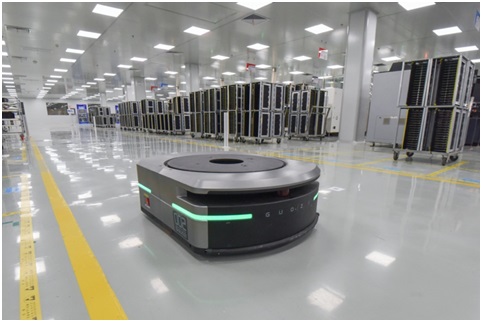By Zhao Yongxin, People’s Daily
China‘s research and development (R&D) spending hit 2.17 trillion yuan ($305.2 billion) in 2019, accounting for 2.19 percent of the country’s GDP, Minister of Science and Technology Wang Zhigang told a press conference on May 19.
China also ranked the first in the number of most-cited papers, as well as the applications and certifications of invention patents, Wang said, adding that the nation’s advances in science and technology contributed to 59.5 percent of economic growth last year.
Based on the evaluations of the World Intellectual Property Organization, China is ranked 14th in the Global Innovation Index 2019.
New progress has been made by China regarding science and technology in the past year, said Wang, adding that key technologies and basic research achieved new breakthroughs. China has enhanced its support for basic research, highlighting indigenous innovation efforts, strengthening the construction of basic disciplines such as mathematics and physics, and reinforcing efforts to tackle forefront technologies and core technologies.
Last year, the country for the first time observed three-dimensional quantum Hall effect, and the Chang’e-4 lunar probe landed on the dark side of the moon. Besides, the country’s prototype magnetic-levitation train with a designed top speed of 600 km per hour also rolled off production line.
Scientific innovation is injecting new impetus into China’s high-quality development, playing an important role in fostering strategic emerging industries. The country commercialized the 14-nanometer manufacturing process of integrated circuits, and comprehensively advanced 5G research, application and commercialization.
Innovation parks and high-tech zones became core incubators fostering high-tech industries. China’s 169 high-tech zones generated total GDP of 12 trillion yuan, over 10 percent of the country’s total. Now, China is home to 225,000 high-tech enterprises and 151,000 small and medium sized tech firms.
Scientific and technological innovation is constantly improving people’s livelihood. Hundreds of thousands of sci-tech experts have been dispatched by the country to rural areas, helping set up 11,500 enterprises. A total of 18 national clinical research centers have been established across the country, and the joint prevention and control of air pollution in key areas such as Beijing, Tianjin and Hebei has been largely advanced.
China has accelerated its reform on science and technology system and the construction of innovation ecology. Transfer and transformation of scientific and technological achievements are constantly being improved. In 2019, the total volume of China’s contracted technology transactions hit 2 trillion yuan, outnumbering the total R&D expenditure of the Chinese society in the same year.
China has further enhanced innovative and cooperative dialogues with major countries, deepening R&D cooperation on climate change, clean energy and life science. It continued implementing the Belt and Road Science, Technology and Innovation Cooperation Action Plan to promote scientific and cultural exchanges, jointly build labs and cooperate on science parks and technological transfer.
Hong Kong and Macao are built into opening-up and cooperation hubs for technologies. China supports Hong Kong to become an international center of innovative technology, and promotes Macao to become an important window and channel linking China’s national innovation system with the world.
A self-piloted transport vehicle powered by 5G technology runs in a factory of Hubei Midea Refrigerator Co., Ltd., May 16. Photo by Huang Zhigang/People’s Daily Online










Leave a Comment